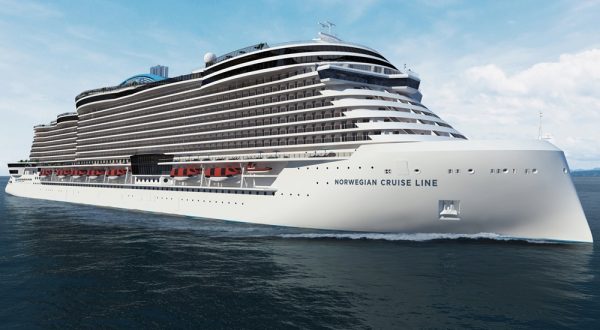Exploring New Approaches To Ship And Maritime Infrastructure Financing
 Shippers’ Guide is the learning page of MMS Plus newspaper. This week we extract some tips on emerging concepts and approaches to ship and maritime infrastructure financing as postulated by Prof. Fabian Ajogwu (SAN) in a paper titled: “Innovative Concepts and Sustainable Approaches to Effective Ship and Maritime Infrastructure Financing in Nigeria: A Critical Review”. Ajogwu delivered this paper at the 2nd edition of the Nigeria Ship Finance Conference and Exhibition (NIFSCOE).
Shippers’ Guide is the learning page of MMS Plus newspaper. This week we extract some tips on emerging concepts and approaches to ship and maritime infrastructure financing as postulated by Prof. Fabian Ajogwu (SAN) in a paper titled: “Innovative Concepts and Sustainable Approaches to Effective Ship and Maritime Infrastructure Financing in Nigeria: A Critical Review”. Ajogwu delivered this paper at the 2nd edition of the Nigeria Ship Finance Conference and Exhibition (NIFSCOE).
Shipping industries present unique challenges from high capital requirements, frequently volatile markets and the fact that they are essentially mobile assets that require special financing structures.16 Globally, ship financing has changed considerably in the past ten years. The market has continued to evolve throughout 2017 and new sources of finance have become available to the industry.
Following the substantial reduction in the availability of financing from traditional banks, ship-owners have been constrained to find alternative financing sources. As the traditional banks have restricted their funding to large shipping clients owing to regulatory and risk management considerations, small to medium-sized ship-owners are now becoming increasingly interested in considering structures such as high-yield bonds, convertible debt and capital and operating leases.
It is noteworthy that some Chinese banks and leasing companies have also entered the shipping market and their participation is expected to increase as a result of China’s One Belt, One Road (OBOR) Initiative. This is a Chinese economic and strategic agenda by which the two ends of Eurasia, as well as Africa and Oceania, are being more closely tied along two routes – one over land and one maritime – to create the modern adaptation of the Silk Road. There is something to be said about the reservations many have about real motives behind China’s OBOR, perceiving it as an exploitative and colonial strategy by China to gain vital assets in small countries and developing economies.
It is important that federal and state governments are cautious and circumspect in negotiating international trade and investment agreements to find a balance between encouraging and attracting foreign investment/participation with building sustainable indigenous capacity and participation.
Alternative structured capital providers have emerged as substitutes to traditional bank lending. These capital providers are interested in creative investment structures involving leasing structures and preferred equity in addition to more traditional debt structures.
Viable options for ship-owners are Export Credit Agencies (ECAs) and private equity. Whilst ECAs have been participating in the ship finance industry by direct lending through bilateral transactions or co-financings or guarantees and insurance policies, private equity entered the shipping industry following the global financial crisis and has generated much discussion on its long term role in shipping.
Private equity funds offer joint ventures with ship-owners and in targeting small and medium sized shipping companies, sometimes directly lend to these companies through primary or more typically, mezzanine financing. Ship-owners are typically wary of alternative finance as opposed to traditional bank debt because of the perceived higher rates. Notwithstanding, these alternative capital providers are expected to be long-term players within the shipping industry particularly if traditional commercial lenders remain unwilling to fully participate in the industry.
Another financing option in the last few years for major players in the industry has been the capital market. Many of these transactions involved the US and Norwegian capital markets with the Norwegian bond market have been seen as particularly favourable for shipping assets. The London markets are also looking to attract their first shipping listings since 2006/2007.
Sustainable Approaches to Financing
With the world becoming increasingly concerned about sustainability and our responsibility not to compromise the ability of future generations to meet their own needs, there have been calls against issues ranging from air pollution and environmental damage to working conditions and governance risks.22 For the shipping industry, this means employing an approach that is both environmentally and economically sustainable and is also preparing itself for how technology can affect the industry.
Routine approach to any issues of environmental risks/damage has been the enforcement of strict emission regulations and safety requirements. However, as a result of challenges present in the industry, companies are already struggling with the problem of positive cash flow and are mostly unable to meet up with these strict requirements.
In view of this, experts have realized that the best way to remedy the problem is to set certain standards and requirements from the financing stage of shipping and maritime projects. This has led to the development of concepts and approaches to promote a shipping industry that takes into consideration sustainability requirements. These new approaches seek to not only remedy sustainability of the shipping sector, but also the sustainability of funding for the shipping sector and to encourage financial institutions to have a greater role in reaching these sustainable goals.
The European Approach to Ship and Maritime Financing
To make the transition to more sustainable operations, substantial investments are needed for existing and newly built ships; this requires additional financing and/or alternative financing models.25 The European Investment Bank (EIB)26 has already taken the lead in sustainable shipping finance and in 2017 signed an agreement with ABN AMRO to support investments for greening the European shipping fleet. The framework guarantees that promoters of green projects in the maritime transport sector can benefit from favorable financial terms. The facility covers both retrofitting of existing shipping as well as for projects that envisage the construction of new vessels with a green innovation aspect and applies to both inland, shipping and sea going operations. The program first launched with financial institutions in France (Societe Generale) and then followed by ABN AMRO of Netherlands and more financial institutions are expected to join.
Coming on the heels of EIB’s initiative, financial institutions in Europe launched the Green Shipping Guarantee (GSG) which is committed to providing advantageous financial terms to sustainable projects and support to the financing of new greener vessels alongside environmentally friendly retro fittings of existing ships. Other initiatives include the Green loan principles (GLP) launched by the Loan Market Association this year. An indication of what the GLP consider to be ‘Green Projects’ includes clean transportation, renewable energy, pollution prevention and control.30 The expectation is this EIB project would catalyse such sustainable policies and green shipping financing in financial institutions all over the world.
Another proposed approach is the ‘Save as You Sail (SAYS) Finance Scheme’ launched by the Sustainable Shipping Initiative (SSI).31 Most of the energy efficient technology that would increase the sustainability of the shipping industry are capital intensive thus requiring firms to finance them through their balance sheet or have access to favourable borrowing, neither of which is easy in the current market.32 To address this, SAYS is designed to share fuel cost savings from investing in retrofitted energy-saving technologies between the ship owner, the time charterer and a finance provider.
The above approaches underscore the importance and increased role of financial institutions in the shipping and maritime industry. Funding of the shipping industry will continue to be provided in large part by financial institutions, and as such they are crucial stakeholders in the shipping industry. The integration or absence of Environmental, Social and Governance (ESG) criteria during the tenure of the facility enables financial institutions to exercise enormous control over the sector’s orientation towards sustainability through the construction phase to operations.
The business case for the integration of sustainability criteria in the financing policies of financial institutions is derived from the fact that ESG issues are important for operating efficiently, ensuring project stability and for risk reduction/mitigation, thereby making the investment space safer and more reliable for investors.35 In offering to finance ships, a financial institution also faces a potential threat in the form of the ESG risks that businesses of the kind can generate. In order to minimize these risks or avoid them altogether, financial institutions should equip themselves with the appropriate processes for managing sustainability in ship financing through the mandatory use of polices.
From a policy point of view, studies recommend that responsible ship financing should comprise four criteria clusters:
– Policy & Governance probes the set-up of a policy, its adoption by the board of directors and how available that information is to the public;
– Policy details examine the depth and breadth of ESG aspects considered by financial institutions;
– Management system examines whether these institutions are employing effective measures in their business activities to implement identified sustainability issues;
– Reporting verifies whether an institution has a transparent reporting system in place and if key performance indicators on the environmental and social aspects of the ship-financing business are available.







